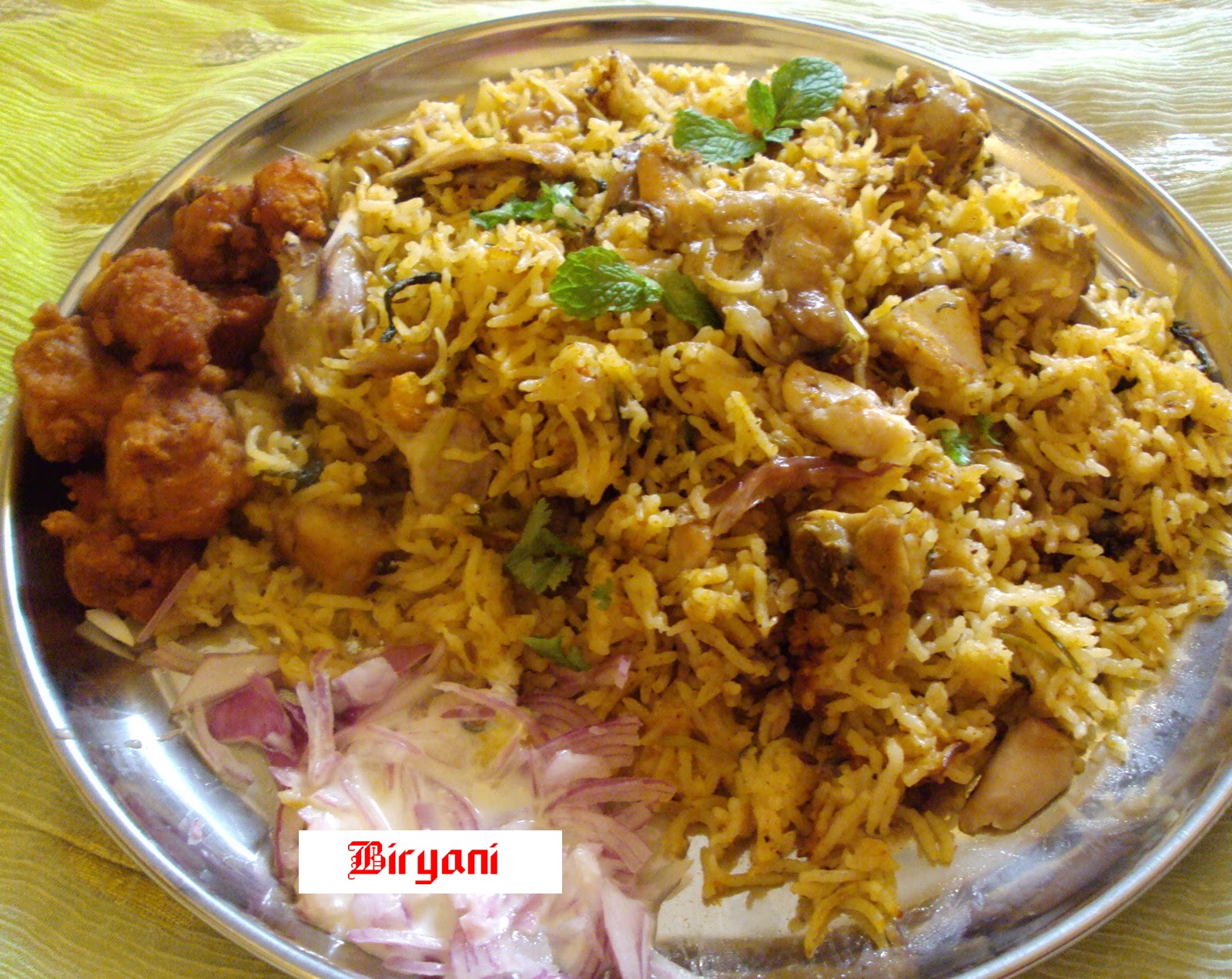Biryani

A Biryani1 is a spiced Indian dish containing meat, fish, shellfish or vegetables cooked with rice.
There are many variations and this recipe skips lightly past them.
INGREDIENTS
- 1-4 Tsp Patak's Biryani Paste (to taste)
or
- ⅛ Tsp Nutmeg (jaiphal)
- ⅛ Tsp Mace (javinthri)
- ¼ Tsp Black pepper (gol mirch)
- ⅛ Tsp Cloves (laung)
- ⅛ Tsp Cardamom (elaichi)
- ¼ Tsp Cinnamon (darchini)
- ⅛ Tsp Bay leaves (powdered)
- 2 Tsp Coriander (powdered - dhania)
- Cayenne (powdered hot chili - lal mirch) to taste
- 2 Tsp Cumin (powdered - jeera)
- 60-100 gm Basmati rice - thoroughly washed and dried to remove starch
- Twice as much water (plus ½ stock cube) or stock as rice
- 20 gm Onions - finely chopped
- Garlic (lasun) paste
- Ginger (adrak) paste
- 20 gm Almonds or roasted cashews (optional)
- 100 gm Meat (chicken, goat, lamb, beef, etc.)
or
- 100 gm Fish (small boneless pieces) or shellfish (uncooked)
or
- 120 gm Vegetables (your choice)
You can, of course, have meat or seafood and vegetables.
These quantities are for one person - it is not practical to make such a small portion,
of course, so multiply them by the number of portions you actually require.
PREPARATION
If the meat is a slow cooking type (goat, mutton, stewing beef or pork) it should be precooked, as should root vegetables and any pulses, but chicken, or stir-fry steak, lamb or pork may be cooked with the ginger, onions and garlic. Sauté the ginger, onions and garlic in a little oil in the pan with any mushrooms (if used) until the onions are nearly cooked. Add the meat (if used) and any nuts and heat thoroughly and then add the spices and cook them for a minute or two longer.
The choice of spices and their proportions, and the heat of the Biryani, lie with the cook's (and his guests') preferences - the ones listed, in the quantities listed, will provide medium spicing (IMHO) - the heat mostly depends on the amount of cayenne. Some Biryani recipes separate the meat and rice into different layers but this is messy and inconvenient and I don't.
Add the washed and drained rice and sauté another 2-3 minutes. Add the vegetables, fish (boneless in small pieces) or shellfish if used, and the hot water or stock (stock is better in this recipe) and bring it back to the boil. Stir, cover and cook on the lowest possible heat that will keep the covered pan boiling (a saucepan with a glass lid helps you check this). Cook for 11 minutes without stirring or removing the lid.
Remove pan
from the stove, stir, cover and allow to stand for a few minutes. Serve with a vegetable curry to provide moisture - the one in this recipe, with slightly more liquid in the sauce, is ideal.
1 Difference between Pulao and Biryani:- Both are mixed rice dishes popular in Indian cuisine. Although some of its varieties are associated with Persian influence in north India, Pulao is also mentioned in ancient Indian texts such as Yagnavalkya Smriti. Opinions differ on the differences between pulao and biryani, and whether there is a difference between the two at all. According to the author Abdul Halim Sharar, the biryani has a stronger taste of curried rice due to a higher amount of spices. Pratibha Karan states that while the terms are often applied arbitrarily, the main distinction is that a biryani comprises two layers of rice with a layer of meat (or vegetables) in the middle; the pulao is not layered. According to Holly Shaffer, based on her observations in Lucknow, in pulao, the rice and meat are cooked separately and then mixed before the dum cooking; in biryani, the soaked rice is fried and then cooked with the meat and stronger spices.
This is a recipe page on the James Bryant (G4CLF) Web-site.
Return to James Bryant's Recipe Index
Return to James Bryant's Home Page
Number of visits to this page:


